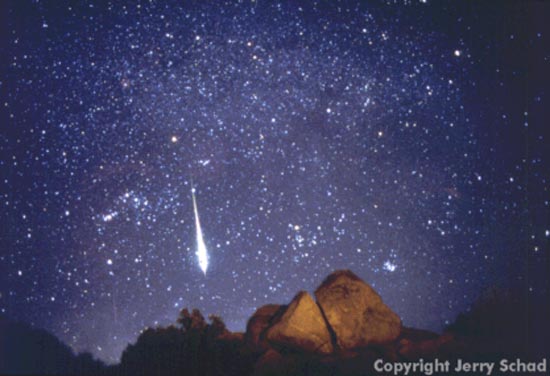
|
Credit & Copyright: Jerry Schad
(SDMC)
Explanation:
Meteors will be flashing across
your skies over the next two nights.
Specifically, the Perseid Meteor Shower should be
at its best just before each morning's dawn.
Observers at dark locations might see as
much as a meteor a minute.
Perseid meteors
are bits of dirt that blew off
Comet Swift-Tuttle and that
burn up as they fall to Earth.
Exciting expectations of a new filament in the
Perseids
might be tested this year.
Pictured above is a meteor from the most active
meteor shower of last year: the
Leonids.
Pictured above, a Leonid meteor was
caught in November outshining even the brightest stars over the
Anza-Borrego Desert in California. The Leonids will peak again this November and
might provide an ever better show.
|
January February March April May June July August September October November December |
| |||||||||||||||||||||||||||||||||||||||||||||||||||||||
NASA Web Site Statements, Warnings, and Disclaimers
NASA Official: Jay Norris. Specific rights apply.
A service of: LHEA at NASA / GSFC
& Michigan Tech. U.
Based on Astronomy Picture
Of the Day
Publications with keywords: meteor - Perseids
Publications with words: meteor - Perseids
See also:
- APOD: 2025 August 25 B The Meteor and the Star Cluster
- APOD: 2025 August 21 B Mostly Perseids
- APOD: 2025 August 20 B Perseid Meteors from Durdle Door
- APOD: 2025 August 12 B Perseids from Perseus
- APOD: 2025 August 6 B Meteor before Galaxy
- APOD: 2025 August 3 B Milky Way and Exploding Meteor
- APOD: 2024 November 27 B The Meteor and the Comet
